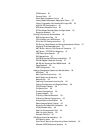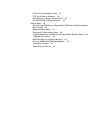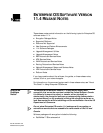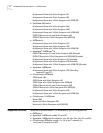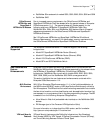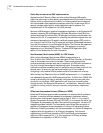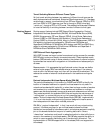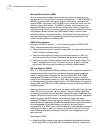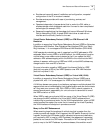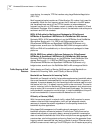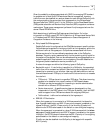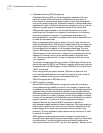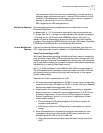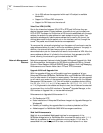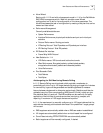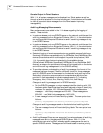
New Features and Feature Enhancements 13
■ Provides end users with ease of installation and configuration; no special
configuration of the PC or modem is needed.
■ Provides services providers with ease of provisioning, services, and
management.
■ Operates independent of access device (that is, works for xDSL, cable, or
wireless devices) which shields end users from the need to learn complicated
technologies (for example, ATM).
■ Preserves the applications that have been built around Microsoft Windows
Dial-Up Networking (DUN). A simple PPPoE client driver is used with an
interface and functionality familiar to the user.
Virtual Router Redundancy Protocol (VRRP) for ATM Ethernet LAN
Emulation
In addition to supporting Virtual Router Redundancy Protocol (VRRP) on Enterprise
OS platforms with Ethernet, Fiber Distributed Data Interface (FDDI), and Token
Ring interfaces, 11.4 now supports ATM Ethernet LAN Emulation (ATM LANE).
LANE operates by maintaining a set of mappings from MAC addresses to ATM
addresses. When running VRRP on a LANE network, the LANE protocol must be
notified when a new master router is elected so that it can update the MAC
address to ATM address mapping within the ELAN for the virtual router's MAC
address. In essence, while running VRRP over LANE, a virtual MAC address may
change location from one LEC to another.
For more information regarding VRRP, consult the Internet Drafts for VRRP
(draft-ietf-vrrp-spec-v2-03.txt) and VRRP Operation over ATM LAN Emulation
(draft-ietf-vrrp-lane-01.txt).
Virtual Router Redundancy Protocol (VRRP) for Virtual LAN (VLAN)
In addition to supporting Virtual Router Redundancy Protocol (VRRP) over a
physical LAN, with 11.4 comes support for VRRP for the Virtual LAN (VLAN).
A VLAN can be seen as a group of end-stations, perhaps on multiple physical LAN
segments that are not constrained by their physical location and can communicate
as if they were on a common LAN. With VRRP for VLAN, network operation is
ensured since dynamic responsibility for a virtual router is transmitted to one of
the VRRP routers on a VLAN.
When VRRP is used over a physical LAN, an owner of the Virtual Router ID (VRID)
may change the MAC address to the Virtual MAC (VMAC) address without
transitioning to promiscuous mode. For the VLAN implementation, when a VRRP
router becomes the master (the router that is forwarding the virtual IP packets),
the VLAN interface will always be in promiscuous mode.
Many-to-One NAT Enhancement
When executing large file transfers with a block size that is greater than the
underlying media can handle, IP will fragment the UDP packet. Since only the first
fragment contains the UDP header (which indicates the source and destination
port required by NAT to map to a NAT IP address), the subsequent fragmented
packets do not contain the UDP header. This results in NAT not having the UDP
ports to map to the NAT IP address. In previous releases, this condition would



